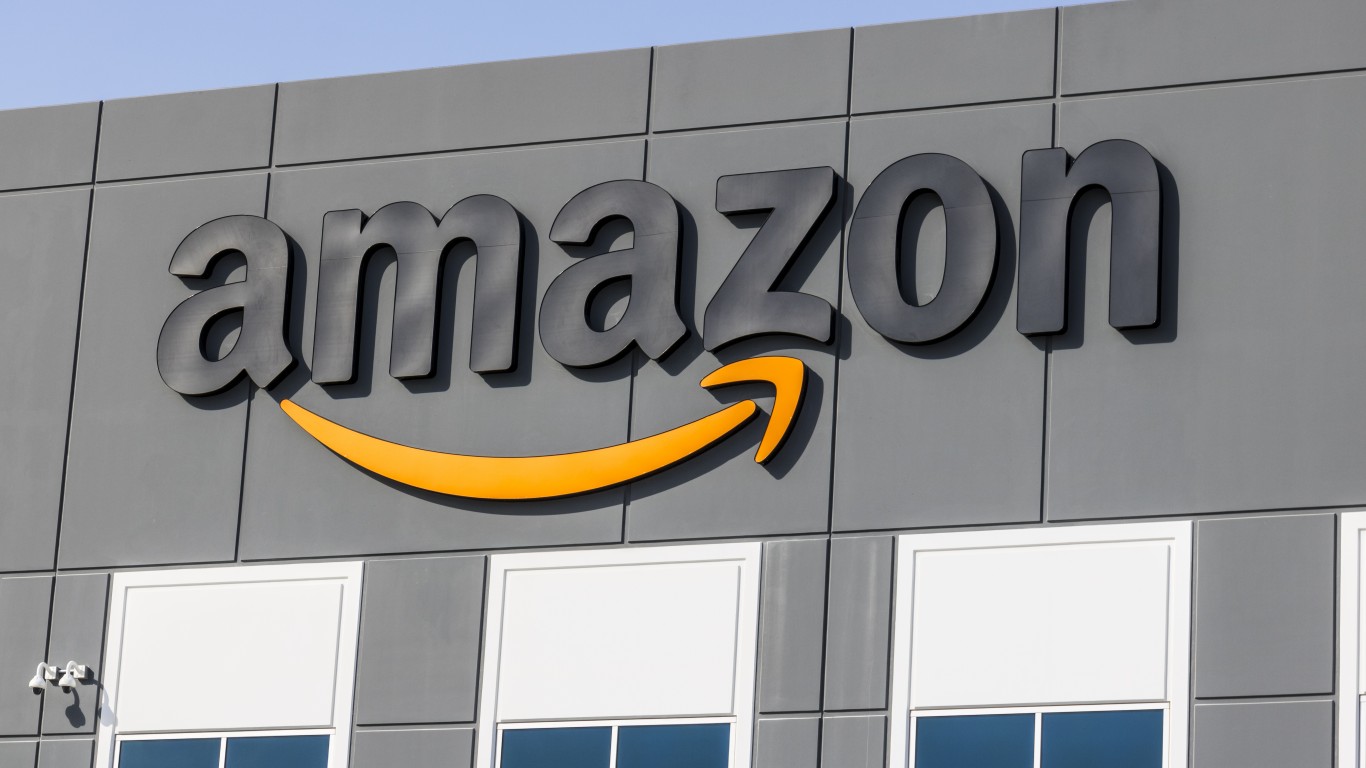Energy
Amazon Gets on Board Carbon Capture Train, but Will It Make a Difference?

Published:

Calling it a “critical technology in the fight against climate change,” Amazon announced Tuesday morning that it will purchase 250,000 metric tons of carbon removal credits over the next 10 years from a direct air capture (DAC) plant being built by a subsidiary of Occidental Petroleum (Oxy) on the King Ranch in South Texas. Amazon will also invest directly in a climate technology company building modular DAC systems. (These 20 banks are still pouring billions into the fossil fuel industry.)
There is a lot to unpack here. Unlike carbon capture equipment that grabs CO2 at the source, DAC works pretty much like an air purifier you can buy for your home. The difference, of course, is scale. In its announcement, Amazon said the carbon it is purchasing “is equivalent to the amount of carbon stored naturally across more than 290,000 acres of U.S. forests—roughly half the size of the state of Rhode Island.”
Amazon also cites a target put up by the Intergovernmental Panel on Climate Change (IPCC): “the world needs to remove roughly 1 trillion tons of carbon dioxide from the atmosphere over the course of this century to keep global warming below the 1.5 degrees Celsius limit set by the Paris Agreement.” DAC machinery is expected to play a big role in removing carbon that is already in the atmosphere.
The federal government has also gotten on board the carbon capture train, recently committing more than $1 billion to demonstration projects in Texas and Louisiana that are expected to remove 2 million metric tons of carbon from the atmosphere annually once the projects are running at full capacity. The Oxy subsidiary, 1PointFive, is the company Amazon will buy its carbon removal credits from.
Carbon prices Tuesday morning were $29.37 in California, and €82.56 in the European Union. A recent study suggests that a ton of carbon should cost $190.00. That is a huge difference: at around $30.00, Amazon is spending $7.5 million; at $190.00, the cost for 250,000 credits is $47.5 million.
DAC is a high-profile, high-cost system that allows companies heavily invested in burning fossil fuels to continue to do so. Stanford University professor Mark Z. Jacobson warns: “Combustion is the problem – when you’re continuing to burn something, that’s not solving the problem.”
Instead, Jacobson has argued, invest in wind, water and solar, what he calls WWS technologies, that are already widely available, relatively cheap and 100% renewable without so-called miracle technology, like DAC.
Jacobson argues that WWS technologies amount to 95% of the solution to the climate crisis and that the other 5% (fuel for airplanes and ships) can be solved with hydrogen fuel cells. But what about the already-fouled air? Don’t we need to try everything in order to stay below the IPCC’s 1.5°C of global heating?
In Jacobson’s view, there are two camps in the energy transition movement: “One says we should just try everything – they’re the ‘all-of-the-above camp’ – and keep investing huge amounts of money in technologies that may or may not be available to work in 10 years. But 10 years is too late.”
The second camp, he told The Guardian, focuses on the technology that is available now and can be deployed quickly: “And we will improve those technologies just by deploying, bringing better solar panels, batteries, electric vehicles, and so on. Some people just don’t realise the speed that we need to solve these problems, especially air pollution – 7 million people die every year. We can’t wait.”
In 2019, Jacobson published a paper on the health and climate impacts of both carbon capture and DAC. Here is how that paper begins:
Data from a coal with carbon capture and use (CCU) plant and a synthetic direct air carbon capture and use (SDACCU) plant are analyzed for the equipment’s ability, alone, to reduce CO2. In both plants, natural gas turbines power the equipment. A net of only 10.8% of the CCU plant’s CO2-equivalent (CO2e) emissions and 10.5% of the CO2 removed from the air by the SDACCU plant are captured over 20 years, and only 20–31%, are captured over 100 years. The low net capture rates are due to uncaptured combustion emissions from natural gas used to power the equipment, uncaptured upstream emissions, and, in the case of CCU, uncaptured coal combustion emissions.
He has not changed his mind. Here is what he told The Guardian: “Carbon capture and storage is solely designed to keep the fossil fuel industry in business.”
Retirement can be daunting, but it doesn’t need to be.
Imagine having an expert in your corner to help you with your financial goals. Someone to help you determine if you’re ahead, behind, or right on track. With SmartAsset, that’s not just a dream—it’s reality. This free tool connects you with pre-screened financial advisors who work in your best interests. It’s quick, it’s easy, so take the leap today and start planning smarter!
Don’t waste another minute; get started right here and help your retirement dreams become a retirement reality.
Thank you for reading! Have some feedback for us?
Contact the 24/7 Wall St. editorial team.